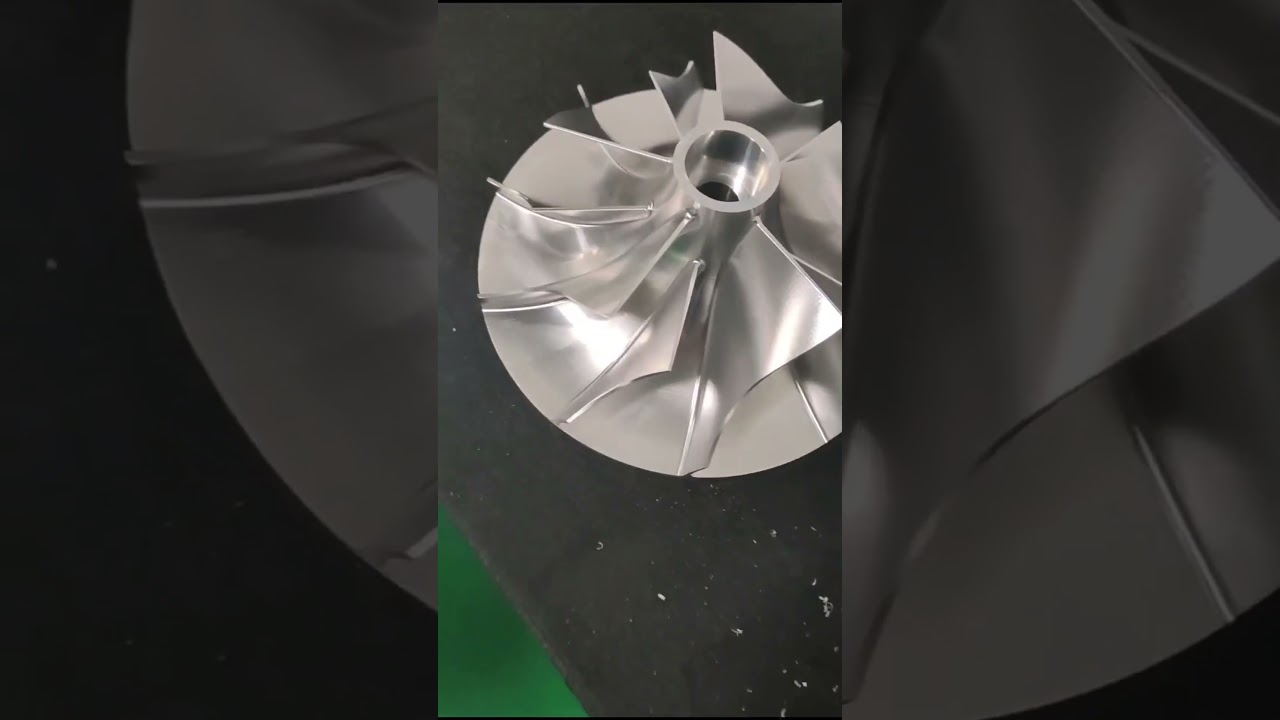Understanding 5-Axis CNC Machining for Impeller Production
In the world of manufacturing, precision and efficiency are paramount. For components like impellers, which are integral to various applications such as pumps, turbines, and compressors, achieving high-quality results often requires advanced manufacturing techniques. One such technique making headlines is 5-axis CNC machining. In this post, we delve deep into the nuances of 5-axis impeller CNC machining, its benefits, applications, and how it revolutionizes the manufacturing landscape.
What is 5-Axis CNC Machining?
CNC, or Computer Numerical Control, machining uses computer-controlled machines to cut and shape materials. While traditional CNC machines operate primarily on three axes (X, Y, and Z), 5-axis CNC machining takes it a step further. It enables movement along two additional rotational axes, allowing the cutting tool to approach the workpiece from virtually any direction.
This enhanced flexibility is critical for producing complex geometries such as impellers, which require intricate designs and high precision. The capability to tilt and rotate the cutting tool means that manufacturers can achieve smoother surfaces and reduce the number of setups needed to create parts, saving both time and material costs.
The Importance of Impellers in Engineering
Before diving into the specifics of 5-axis CNC machining, it’s essential to understand the role of impellers. Impellers are rotating devices found in a variety of applications, primarily in engines, pumps, and compressors. They are responsible for moving fluids by converting rotational energy into kinetic energy.
Given their critical function, any imperfections in an impeller’s design can lead to inefficiencies, reduced performance, or even catastrophic failures in systems relying on their operation. Therefore, precision in the machining of these components is non-negotiable.
Advantages of 5-Axis CNC Machining
-
Enhanced Precision
One of the most significant advantages of 5-axis machining is its ability to produce intricate designs with unparalleled accuracy. The ability to manipulate the tool in multiple directions allows for tight tolerances, ensuring that impellers fit perfectly within their intended systems. -
Reduced Setup Time
In traditional machining processes, multiple setups are often necessary to create a complex part. With 5-axis technology, manufacturers can adjust the tool’s angle and position in one continuous operation. This reduction in setups results not only in time saved but also minimizes the risk of misalignment when repositioning parts. -
Improved Surface Finish
The dynamic movement capabilities of 5-axis machining help in optimizing the cutting process, which leads to an improved surface finish. This is particularly vital for impellers, where surface smoothness affects performance and efficiency in fluid dynamics. -
Complex Geometries Made Easy
5-axis CNC machining shines when it comes to producing complex shapes, making it the ideal choice for bespoke impeller designs. This capability opens up new avenues for engineering innovations and customizations that were previously deemed too challenging or costly. - Material Efficiency
The precision of 5-axis machining contributes to material efficiency. Less waste material means that production costs can be kept down, which is crucial in an industry where margins can be tight.
Selecting the Right Material for Impellers
Different applications require different materials to ensure lasting performance. The choice of material for impellers can impact the machining process and the final product’s strength and durability.
-
Aluminum Alloys: Lightweight and easy to machine, these alloys are often used for applications requiring good performance without adding excessive weight.
-
Stainless Steel: Known for its corrosion resistance, stainless steel is a common choice in industries like marine and chemical processing.
- Titanium: Although more challenging to machine, titanium offers exceptional strength-to-weight ratios and is often favored in aerospace applications.
The Process of Machining an Impeller
-
Design and Simulation
The initial step in machining an impeller involves creating a 3D CAD model. Modern software allows engineers to simulate the machining process, optimizing tool paths and identifying potential issues before physical machining. -
Material Selection and Preparation
Based on the application requirements, the appropriate material is selected. This material is then prepared for machining, which includes cutting the material to size if required. -
CNC Setup
This involves installing the impeller blank on the machine’s worktable, setting up the cutting tools, and programming the CNC machine with the necessary tool paths. -
Machining
As the CNC machine begins its work, the impeller undergoes various machining processes, including roughing and finishing, using the 5-axis capabilities to achieve the desired geometry. -
Quality Control
After machining, stringent quality checks are performed. This includes verifying the dimensions and surface finish, ensuring that the impellers meet all required specifications. - Finishing Touches
Depending on the application, additional finishing processes may be applied, such as polishing or anodizing, to enhance appearance and performance characteristics.
The Future of 5-Axis CNC Machining in Impeller Manufacturing
As industries continue to evolve, so does the technology behind CNC machining. The integration of artificial intelligence and machine learning into CNC processes promises to further enhance efficiency and precision. Improved robotic automation is expected to streamline production, making complex impellers more accessible to a broader range of industries.
Moreover, the rise of additive manufacturing may complement traditional subtractive 5-axis machining, allowing for hybrid approaches that leverage the strengths of both methodologies. As manufacturers continue to adopt these innovations, the landscape of impeller production is poised for transformation.
Conclusion
5-axis impeller CNC machining stands at the forefront of modern manufacturing. Its ability to create intricate designs with high precision gives it an undeniable edge in both quality and efficiency. As industries seek improved performance and sustainability, the role of advanced machining techniques will only grow in importance. For manufacturers looking to produce top-notch impellers, embracing the capabilities of 5-axis CNC machining is not just a choice; it’s a necessity for future success.
By understanding the intricacies of this technology and its advantages, engineering teams can ensure their products not only meet but exceed performance expectations in a competitive market. As we continue to push the boundaries of design and manufacturing, 5-axis machining remains a critical player in the quest for innovation and excellence in impeller production.
Whether you are a manufacturer looking to upgrade your machining capabilities or an engineer needing a deeper understanding of the nuances of impeller production, embracing 5-axis CNC technology is a step toward a more efficient and innovative future.
Daguang focuses on providing solutions such as precision CNC machining services (3-axis, 4-axis, 5-axis machining), CNC milling, 3D printing and rapid prototyping services.

















